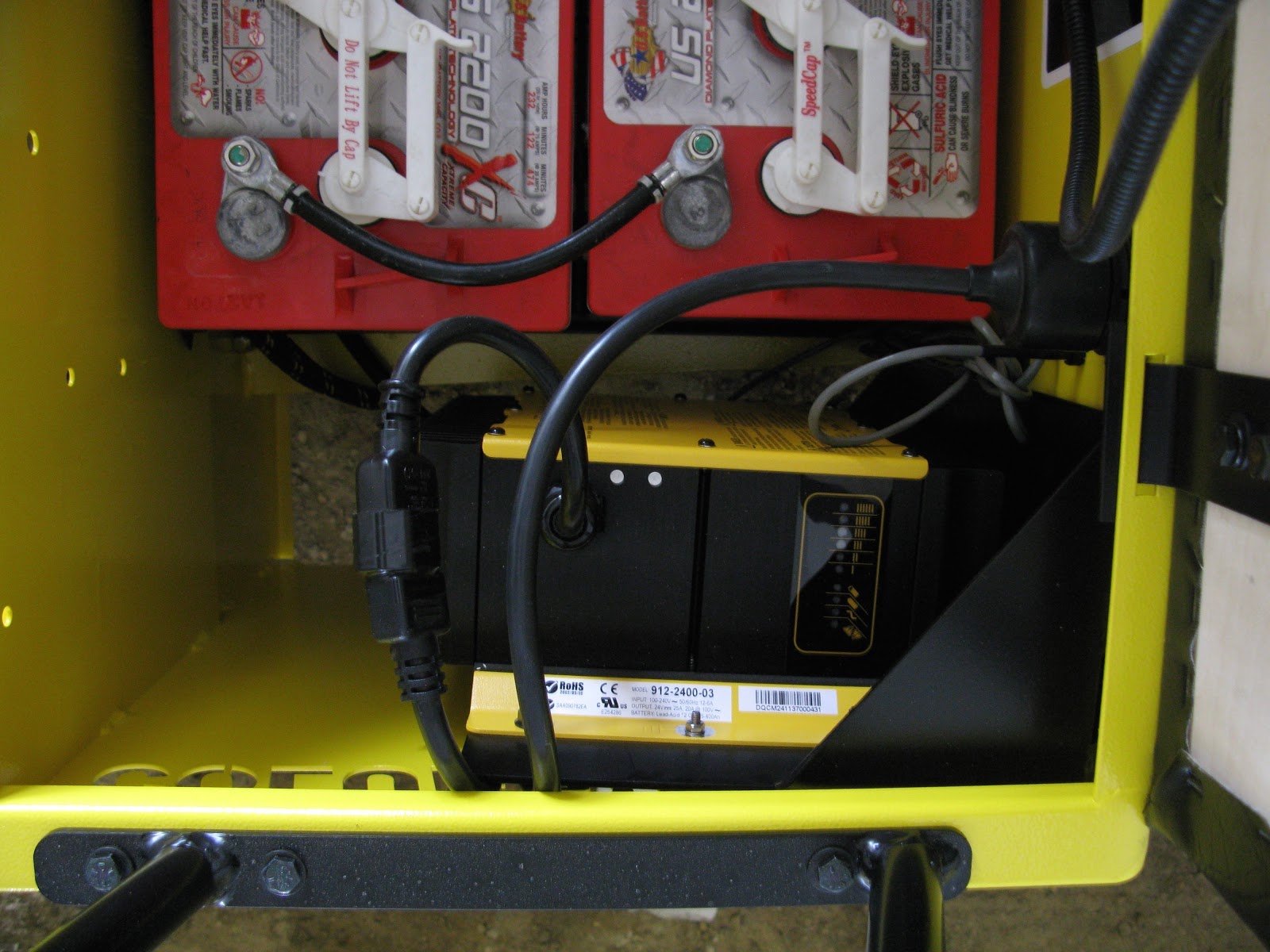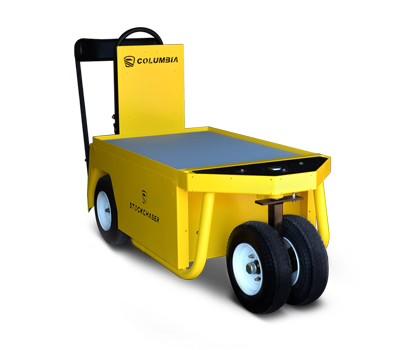
Columbia wanted to eliminate the cumbersome charging stations and the intensive process of battery exchange. By making changes to these two battery functions the safety and ease of the operator increased saving the operator and customer time and money. These factors led to the development of the onboard opportunity charging system.
Opportunity charging was developed with the creation of an onboard opportunity charging system. This eliminated the need for large, cumbersome charging stations. The size of the charging unit was decreased by 80% allowing for it to be stowed onboard. This reduction in size also allowed for the unit to be plugged into any available 110 electrical outlet. Columbia also incorporated a battery temperature gauge allowing for easier determination of battery usage. Another diagnostic capability of the new onboard opportunity charging system was the ability to attach the system to a computer to download the power usage data.
The other battery innovation of the 2000's was the development of the battery exchange system in the Stockchaser. The old system of battery exchange involved an overhead crane. The battery exchange system is now done with a simple floor jack. This new system is much safer, efficient, and cost effective.
The development of both the onboard opportunity charging system and the battery exchange system have made each unit extremely efficient, promote the management of power usage, and have reduced operating costs of vehicle ownership.
There were two main structural developments in the 2000's. The first being the development of the dual wheel front end in the Stockchaser. This engineering feat made way for a drastic increase in stability, reduced steering effort, and a tighter turn radius. The addition of the second wheel also allowed for an increase to the load capacity of the Stockchaser.

The second main structural development was the introduction of composite deck boards instead of the traditional plywood deck boards. This change of material allowed for an increase in safety, lighter deck boards, and in increased longevity of the deck boards. All of which lead to the virtual elimination of personal injury and cost of damaged freight due to freight loads shifting or being dropped.
The 2000's were a decade of increased safety to the operator due to the elimination of older processes and the increased cost effectiveness of the vehicles. Columbia was able to achieve these through their innovative efficiencies in both battery power and structural integrity.
Over the last 30 years, Columbia has been able to develop leading technologies in design, power, battery efficiency, cost effectiveness, and safety in the electric vehicle industry. With these innovative technologies as a backbone, Columbia continues to pave even more paths in the industry. Ringing in the 2010's with game-changing technologies as well as designing new modifications for even more applications of its vehicles. Check back in to view our final installment of our Columbia Innovation series to get up to speed with what the 2010's innovations have brought to the table thus far.



